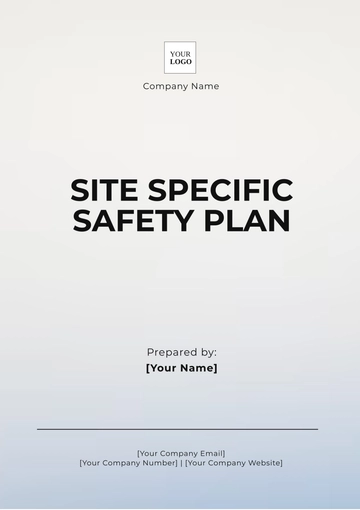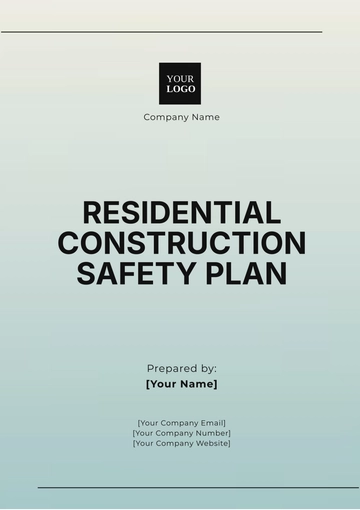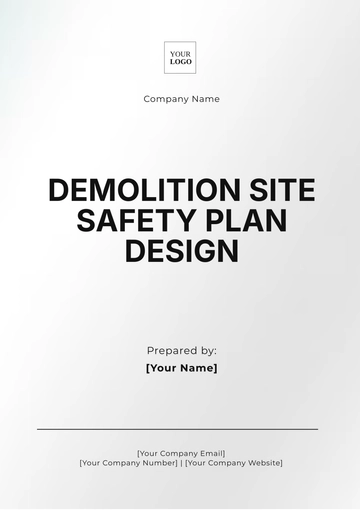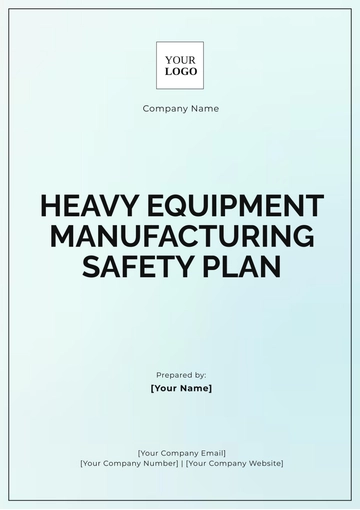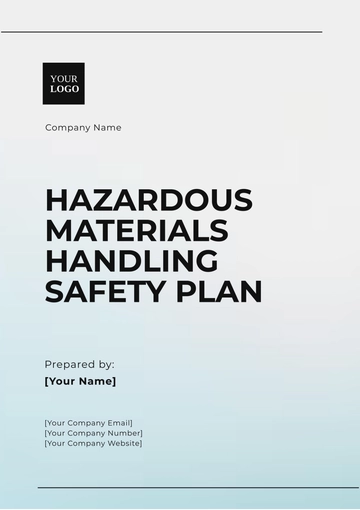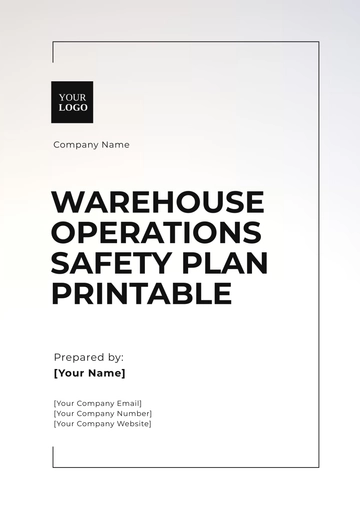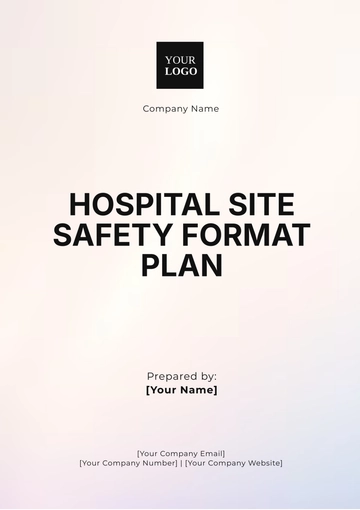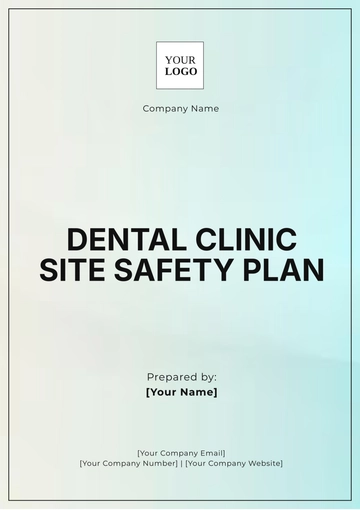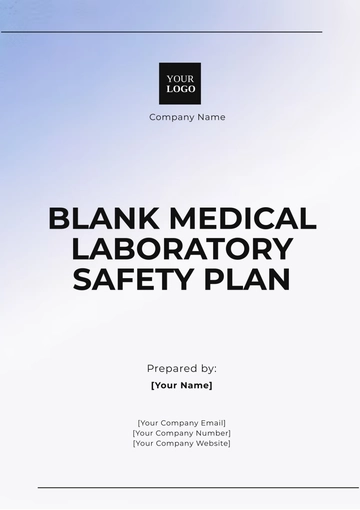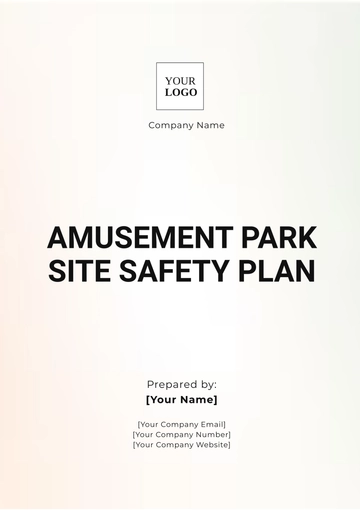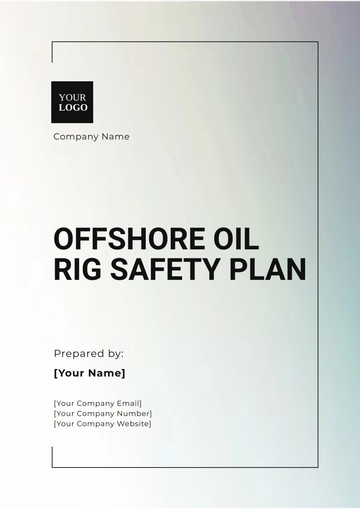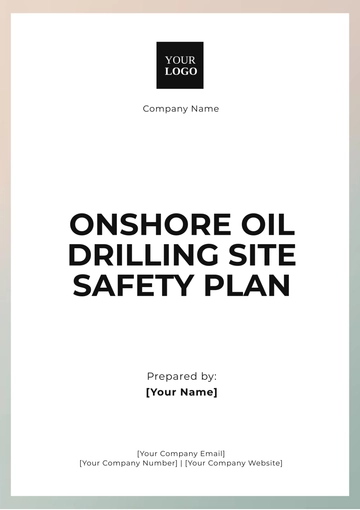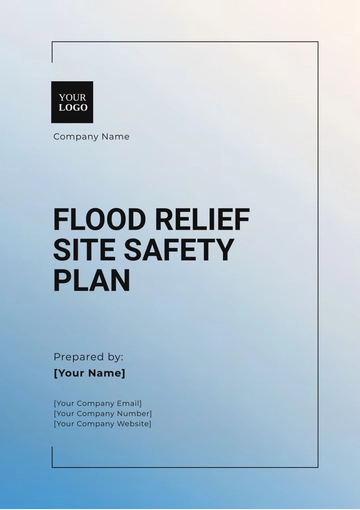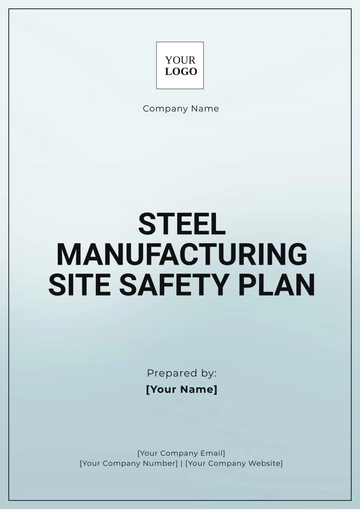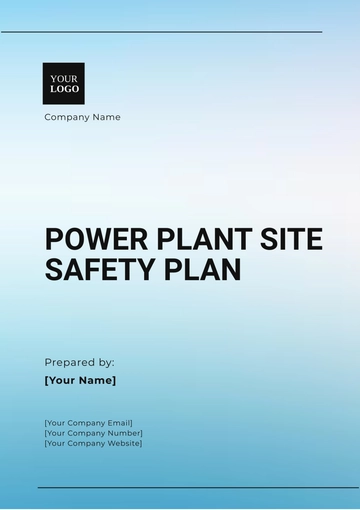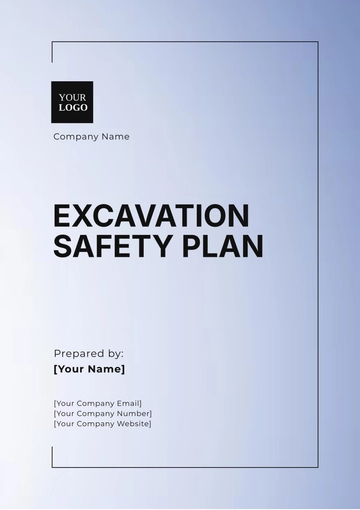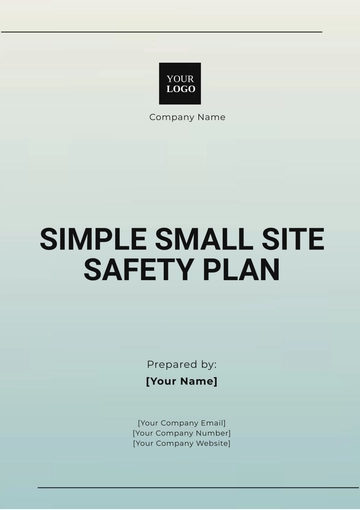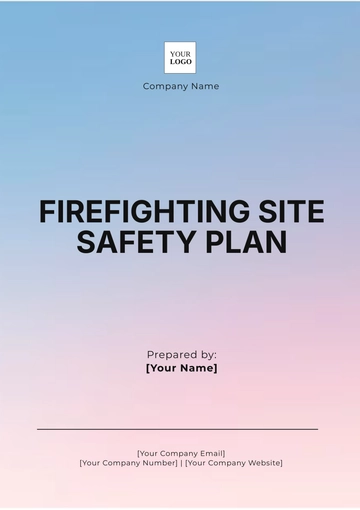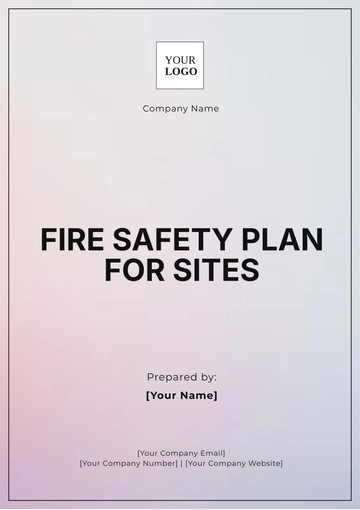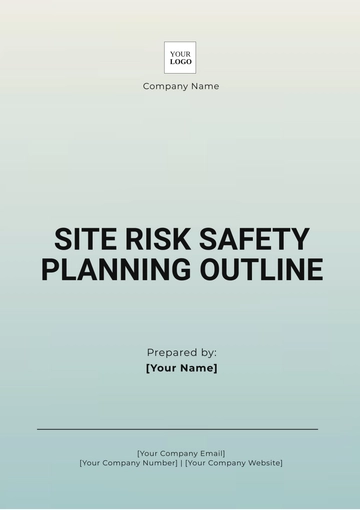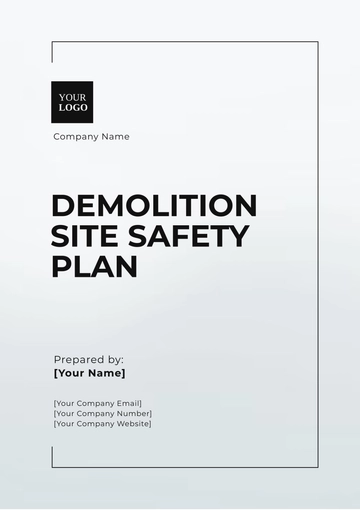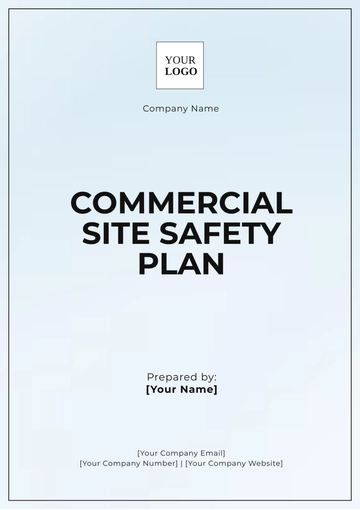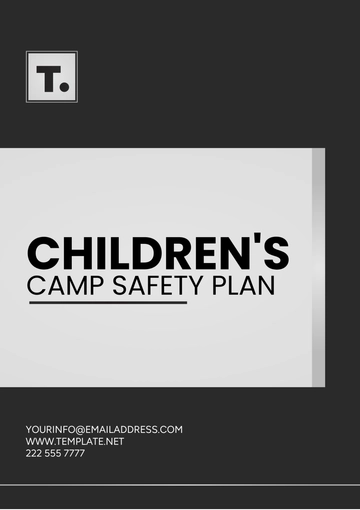Free Power Plant Site Safety Plan
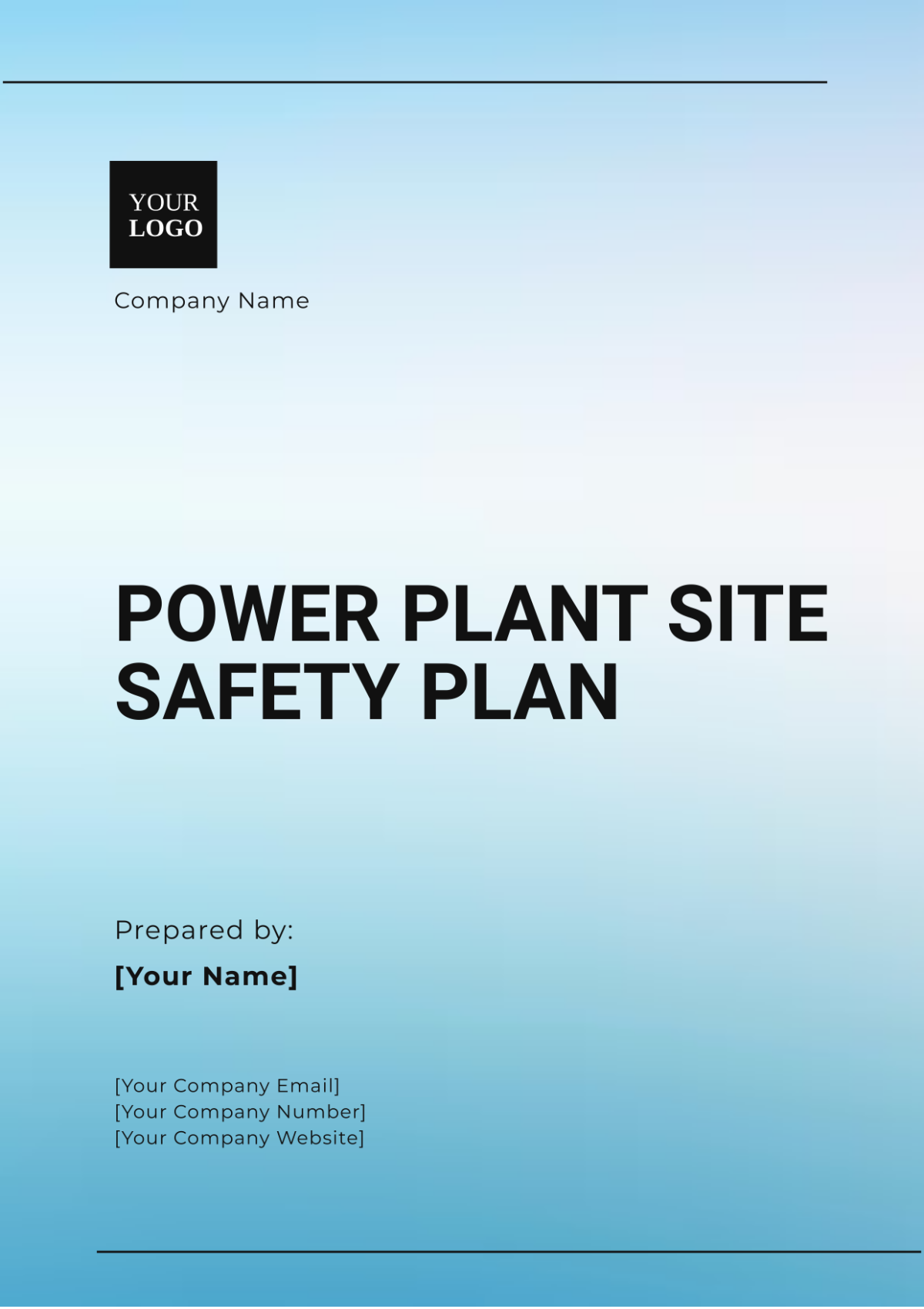
Prepared By: [Your Name]
Company: [Your Company Name]
1. Introduction
The safety of personnel, the environment, and equipment at the power plant is of paramount importance. This Power Plant Site Safety Plan outlines the safety protocols and procedures designed to prevent accidents and injuries, ensuring a safe working environment for all employees and visitors.
2. Objectives
The primary objectives of this safety plan include:
Ensuring the health and safety of all personnel.
Complying with applicable regulations and industry standards.
Minimizing risks associated with power plant operations.
Establishing clear communication channels regarding safety concerns.
Promoting a culture of safety within the organization.
3. Scope
This safety plan applies to all employees, contractors, visitors, and any individuals entering the power plant site. It covers all operational areas, including generation units, maintenance zones, and administrative offices.
4. Safety Responsibilities
4.1 Management Responsibilities
Ensure compliance with all applicable safety regulations.
Provide necessary resources for implementing safety measures.
Conduct regular safety audits and inspections.
Foster a culture of safety through training and communication.
4.2 Employee Responsibilities
Adhere to all safety protocols and procedures.
Report unsafe conditions or incidents immediately.
Participate in safety training and drills.
Use personal protective equipment (PPE) as required.
5. Hazard Identification and Risk Assessment
5.1 Hazard Identification
Conduct regular assessments to identify potential hazards, including:
Electrical hazards
Chemical exposure
Mechanical hazards
Fire risks
Slips, trips, and falls
5.2 Risk Assessment
Evaluate the likelihood and severity of identified hazards.
Implement control measures to mitigate risks.
6. Safety Procedures
6.1 Emergency Procedures
Emergency Response Plan: Establish a clear plan for responding to emergencies, including fires, chemical spills, and medical emergencies.
Evacuation Routes: Mark evacuation routes and conduct regular drills.
6.2 Personal Protective Equipment (PPE)
PPE Requirements: All personnel must wear appropriate PPE based on their job function. This includes:
Hard hats
Safety goggles
Hearing protection
Gloves
Steel-toed boots
Respirators (when required)
Training: Provide training on the proper use, maintenance, and limitations of PPE.
6.3 Equipment Safety
Ensure all machinery and equipment are regularly inspected and maintained.
Train employees on safe operation procedures.
7. Training and Communication
7.1 Safety Training
Provide comprehensive safety training to all employees upon hiring and annually thereafter.
Conduct specialized training for high-risk tasks.
7.2 Safety Meetings
Hold regular safety meetings to discuss safety performance and address concerns.
Encourage open communication about safety issues.
8. Incident Reporting and Investigation
8.1 Reporting Procedures
Establish a clear process for reporting incidents, near misses, and unsafe conditions.
Ensure all incidents are documented accurately.
8.2 Investigation Procedures
Investigate all incidents to identify root causes.
Implement corrective actions to prevent recurrence.
9. Continuous Improvement
9.1 Safety Audits
Conduct regular safety audits to evaluate compliance with the safety plan.
Use audit findings to improve safety protocols.
9.2 Review and Update
Review the safety plan annually or as needed to incorporate new regulations, technologies, and lessons learned from incidents.
10. Conclusion
The Power Plant Site Safety Plan is essential for ensuring a safe working environment for all personnel involved in power generation. By adhering to this plan, employees can contribute to a culture of safety and prevent accidents, ultimately protecting themselves, their colleagues, and the environment.
- 100% Customizable, free editor
- Access 1 Million+ Templates, photo’s & graphics
- Download or share as a template
- Click and replace photos, graphics, text, backgrounds
- Resize, crop, AI write & more
- Access advanced editor
Ensure a safe operational environment at your power plant with the Power Plant Site Safety Plan Template from Template.net. This editable and customizable template is specifically designed to address the unique safety challenges of power generation facilities. Easily adapt the content to fit your site's safety protocols and regulatory requirements. With its structured layout and comprehensive guidelines, you can effectively communicate essential safety measures, protecting your workforce and equipment.
You may also like
- Finance Plan
- Construction Plan
- Sales Plan
- Development Plan
- Career Plan
- Budget Plan
- HR Plan
- Education Plan
- Transition Plan
- Work Plan
- Training Plan
- Communication Plan
- Operation Plan
- Health And Safety Plan
- Strategy Plan
- Professional Development Plan
- Advertising Plan
- Risk Management Plan
- Restaurant Plan
- School Plan
- Nursing Home Patient Care Plan
- Nursing Care Plan
- Plan Event
- Startup Plan
- Social Media Plan
- Staffing Plan
- Annual Plan
- Content Plan
- Payment Plan
- Implementation Plan
- Hotel Plan
- Workout Plan
- Accounting Plan
- Campaign Plan
- Essay Plan
- 30 60 90 Day Plan
- Research Plan
- Recruitment Plan
- 90 Day Plan
- Quarterly Plan
- Emergency Plan
- 5 Year Plan
- Gym Plan
- Personal Plan
- IT and Software Plan
- Treatment Plan
- Real Estate Plan
- Law Firm Plan
- Healthcare Plan
- Improvement Plan
- Media Plan
- 5 Year Business Plan
- Learning Plan
- Marketing Campaign Plan
- Travel Agency Plan
- Cleaning Services Plan
- Interior Design Plan
- Performance Plan
- PR Plan
- Birth Plan
- Life Plan
- SEO Plan
- Disaster Recovery Plan
- Continuity Plan
- Launch Plan
- Legal Plan
- Behavior Plan
- Performance Improvement Plan
- Salon Plan
- Security Plan
- Security Management Plan
- Employee Development Plan
- Quality Plan
- Service Improvement Plan
- Growth Plan
- Incident Response Plan
- Basketball Plan
- Emergency Action Plan
- Product Launch Plan
- Spa Plan
- Employee Training Plan
- Data Analysis Plan
- Employee Action Plan
- Territory Plan
- Audit Plan
- Classroom Plan
- Activity Plan
- Parenting Plan
- Care Plan
- Project Execution Plan
- Exercise Plan
- Internship Plan
- Software Development Plan
- Continuous Improvement Plan
- Leave Plan
- 90 Day Sales Plan
- Advertising Agency Plan
- Employee Transition Plan
- Smart Action Plan
- Workplace Safety Plan
- Behavior Change Plan
- Contingency Plan
- Continuity of Operations Plan
- Health Plan
- Quality Control Plan
- Self Plan
- Sports Development Plan
- Change Management Plan
- Ecommerce Plan
- Personal Financial Plan
- Process Improvement Plan
- 30-60-90 Day Sales Plan
- Crisis Management Plan
- Engagement Plan
- Execution Plan
- Pandemic Plan
- Quality Assurance Plan
- Service Continuity Plan
- Agile Project Plan
- Fundraising Plan
- Job Transition Plan
- Asset Maintenance Plan
- Maintenance Plan
- Software Test Plan
- Staff Training and Development Plan
- 3 Year Plan
- Brand Activation Plan
- Release Plan
- Resource Plan
- Risk Mitigation Plan
- Teacher Plan
- 30 60 90 Day Plan for New Manager
- Food Safety Plan
- Food Truck Plan
- Hiring Plan
- Quality Management Plan
- Wellness Plan
- Behavior Intervention Plan
- Bonus Plan
- Investment Plan
- Maternity Leave Plan
- Pandemic Response Plan
- Succession Planning
- Coaching Plan
- Configuration Management Plan
- Remote Work Plan
- Self Care Plan
- Teaching Plan
- 100-Day Plan
- HACCP Plan
- Student Plan
- Sustainability Plan
- 30 60 90 Day Plan for Interview
- Access Plan
- Site Specific Safety Plan
